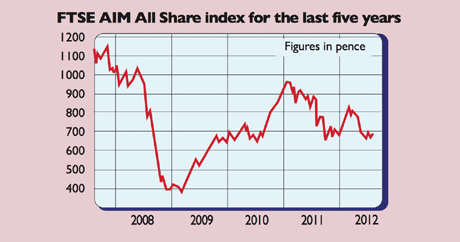
More and more companies are delisting their shares from the stock exchange. Why? And does it matter? Matthew Partridge reports.
Is delisting common in the UK?
Very. The Financial Times reports that there have been more than 100 delistings a year from the Alternative Investment Market (Aim – the UK stock exchange for small and mid-cap sized firms) since 2005. In 2009 alone, there were nearly 300. Even allowing for new firms entering the market, the number of companies on Aim has dropped from 1,694 to 1,114. And it’s not just Aim.
Overall, in the decade from the start of 2002 to the end of 2011, 3,423 firms have left the London Stock Exchange (LSE) Group, which comprises both Aim and the main LSE market for bigger firms. A study by the accountancy firm UH Young suggests that financial stress was a major factor with mergers accounting for 40% of delistings.
Are there any recent examples?
The Lighthouse Group, one of the last financial adviser groups listed on Aim, was recently forced by shareholders to scrap its plans to delist after 12 years on the market, according to the Financial Times. Executive chairman David Hickey had argued that the costs of being listed, especially complying with all the rules, were too high, while its small market capitalisation ruled it out for most institutional investors.
For companies the size of Lighthouse (which has a market cap of below £6m) “the market just doesn’t work”, Hickey said. However, major shareholders, including the former chief executive, argued that, “The board of directors of a business that has gone through the process of becoming quoted and, in doing so, sought external private and institutional investors… owes it to those shareholders to continue to operate as a listed entity, or make a sensible cash offer for their shares.” A small majority of them voted against the move, and the board retreated.
What are the benefits of delisting?
Being listed or ‘quoted’ on an exchange has traditionally been seen as a great way to access new capital and raise a firm’s profile. However, as law firm DLA Piper points out, delisting also has several benefits. These include “substantial savings” on stock exchange fees, not to mention “the costs of printing accounts and circulars”.
Leaving public markets usually reduces the money spent on complying with rules too. It may also enable firms to take a longer-term perspective. “If directors are no longer required to spend significant amounts of time with analysts and institutional shareholders and their company becomes subject to fewer reporting requirements, they will have more time… to devote to their business.”
Is it good for shareholders?
In theory, delisting should not be bad for shareholders, and there’s no doubt that there can be sound business reasons for doing so. Unless it is prompted by bankruptcy, a company should continue to run as normal, and the shareholders’ stake in the company will be unaffected. However, in practice things often work out badly for the small investor.
Growth Company Investor notes that “companies which delist often promise to do their best to achieve some market for shareholders wanting to sell. But they are inevitably unable to guarantee how quickly and at what price this can be done.”
In some cases, management and larger shareholders may even take advantage and offer to buy illiquid shares at a knockdown price, effectively buying the firm back on the cheap.
How can you protect yourself?
Shareholders need to be on their toes at the slightest whiff of a delisting. Most corporate governance (shareholder protection) requirements, such as quarterly accounts, do not apply to unlisted firms. Investors Chronicle suggests that “the shareholder must be pro-active and diligent at keeping as much information as possible – the more details kept now, the easier it will be down the line”.
Steps include keeping a file “comprising documents, press cuttings and all the contact details relating to the suspension. Attend meetings wherever possible and, if the particular company appears to be on the road to a delisting, ask about any exit routes the directors may have either put in place or are considering.”
Is Aim a dying market?
Aim has done relatively badly over the past 14 years. According to Professors Elroy Dimson and Paul Marsh of London Business School, anyone investing in the market as a whole would have lost money between 1997 and 2011: grim, given that their index of small-cap shares nearly tripled in the same period.
Yet the rate of delisting has slowed this year, according to Deloitte. And while penny shares expert Tom Bulford agrees that some Aim-listed firms are overhyped, “with a bit of work and, yes, a bit of luck too, Aim is still a great place… to make great returns over the medium to long term”.
The global rush to delisting
Delisting is not just a British phenomenon. According to data from the World Federation of Exchanges, 423 companies left Nasdaq and NYSE, the two major US stock exchanges, last year. China is tightening up the rules for foreign-currency denominated shares trading on its major exchanges. Firms will now have to meet minimum levels of revenue, net assets, net profit and equity. The Wall Street Journal reports that this is “part of the country’s broader effort to make the local capital market more responsive to market forces”.
Previously the rules were very lax, which meant that very few firms ended up being removed. The Indian government has also introduced a rule that all listed companies need to have at least 25% of their shares publicly traded. The Economic Times notes that this has forced many multinationals to delist.